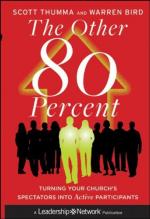[Footnote 2: Sanctorius, a Professor of Medicine at Padua, who died in 1636, aged 75, was the first to discover the insensible perspiration, and he discriminated the amount of loss by it in experiments upon himself by means of his Statical Chair. His observations were published at Venice in 1614, in his ‘Ars de Static Medicind’, and led to the increased use of Sudorifics. A translation of Sanctorius by Dr. John Quincy appeared in 1712, the year after the publication of this essay. The ‘Art of Static Medicine’ was also translated into French by M. Le Breton, in 1722. Dr. John Quincy became well known as the author of a ‘Complete Dispensatory’ (1719, &c.).]
[Footnote 3: an half]
[Footnote 4: The old English reading is:
‘I was well; I would be better; and here I am.’]
* * * * *
No. 26. Friday, March 30, 1711. Addison.
’Pallida
mors aquo pulsat pede pauperum tabernas
Regumque
turres, O beate Sexti,
Vitae summa brevis
spem nos vetat inchoare longam.
Jam
te premet nox, fabulaeque manes,
Et domus exilis
Plutonia.’
Hor.
When I am in a serious Humour, I very often walk by my self in Westminster Abbey; where the Gloominess of the Place, and the Use to which it is applied, with the Solemnity of the Building, and the Condition of the People who lye in it, are apt to fill the Mind with a kind of Melancholy, or rather Thoughtfulness, that is not disagreeable. I Yesterday pass’d a whole Afternoon in the Church-yard, the Cloysters, and the Church, amusing myself with the Tomb-stones and Inscriptions that I met with in those several Regions of the Dead. Most of them recorded nothing else of the buried Person, but that he was born upon one Day and died upon another: The whole History of his Life, being comprehended in those two Circumstances, that are common to all Mankind. I could not but look upon these Registers of Existence, whether of Brass or Marble, as a kind of Satyr upon the departed Persons; who had left no other Memorial of them, but that they were born and that they died. They put me in mind of several Persons mentioned in the Battles of Heroic Poems, who have sounding Names given them, for no other Reason but that they may be killed, and are celebrated for nothing but being knocked on the Head.
[Greek: Glaukon te, Medonta te, Thersilochon te]—Hom.
Glaucumque, Medontaque, Thersilochumque.—Virg.
The Life of these Men is finely described in Holy Writ by the Path of an Arrow which is immediately closed up and lost. Upon my going into the Church, I entertain’d my self with the digging of a Grave; and saw in every Shovel-full of it that was thrown up, the Fragment of a Bone or Skull intermixt with a kind of fresh mouldering Earth that some time or other had a Place in the Composition of an humane Body.




